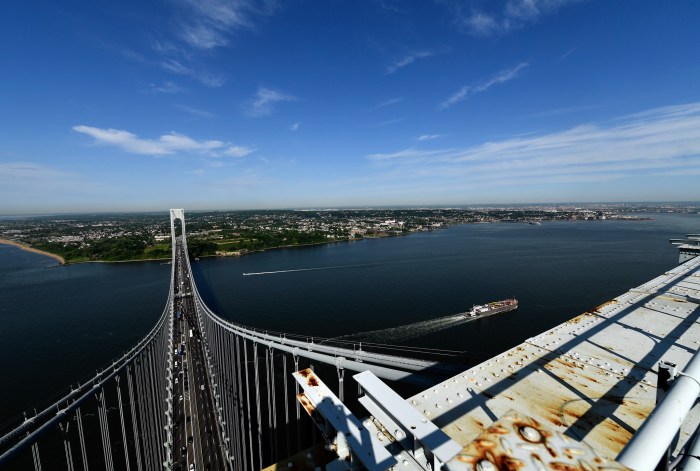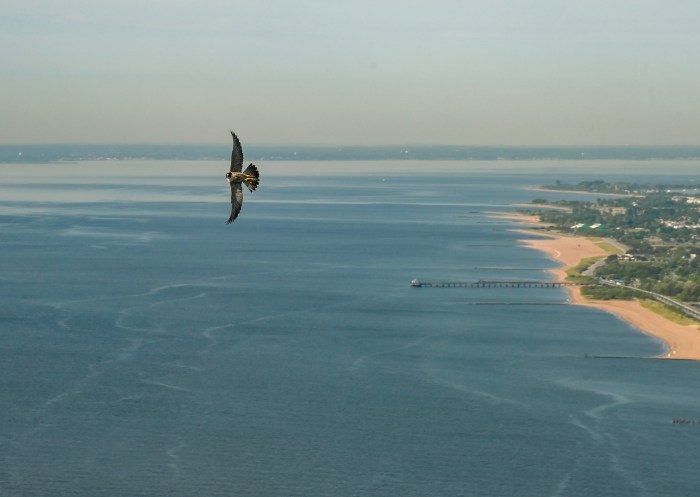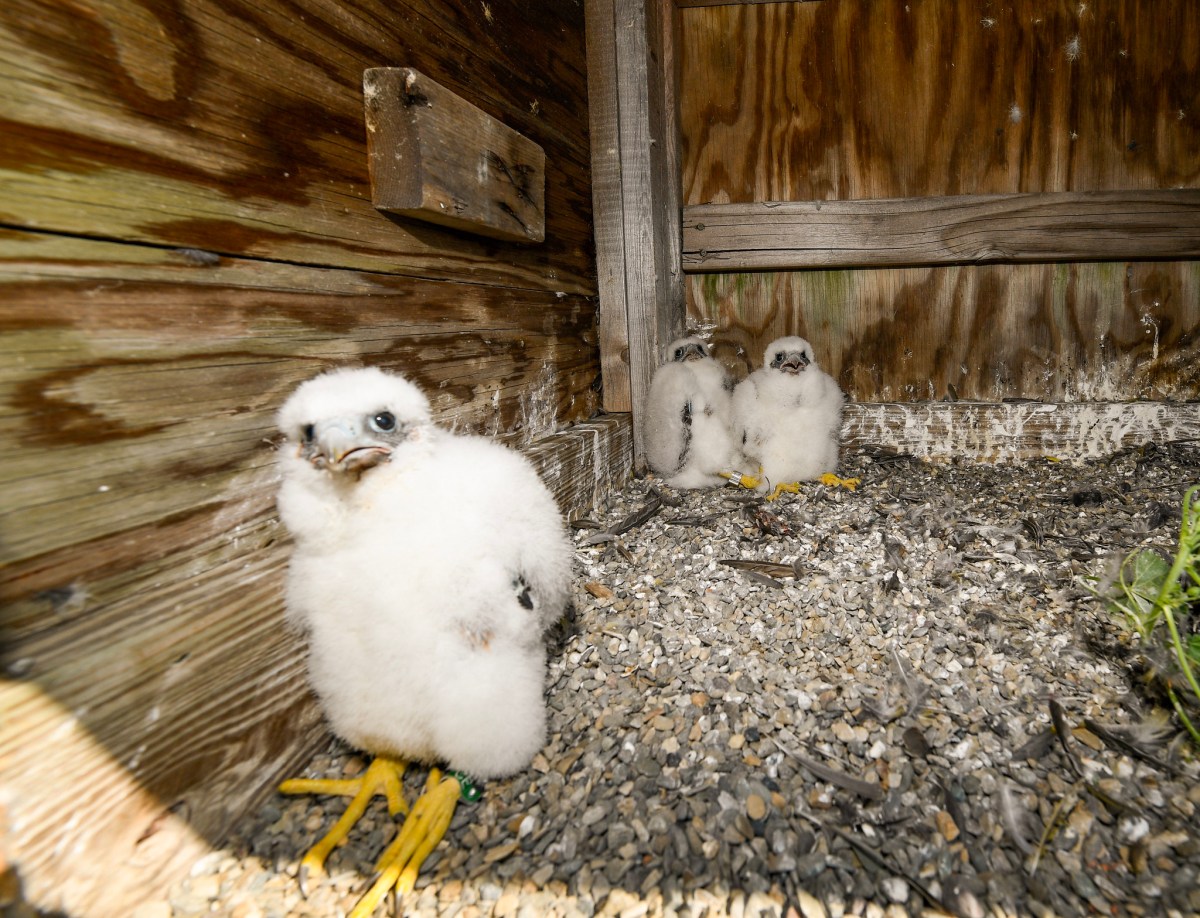Three adorable peregrine falcon chicks hatched this month in a purpose-built nest atop the nearly 700-foot-tall tower of the Verrazzano Narrows Bridge.
The three chicks hatched in early May in a special box containing their nest atop the Brooklyn tower of the Verrazzano, said the MTA, which administers the bridge. The box was purpose-built for the peregrine falcon, which is the fastest animal in the world, capable of flying at 200 miles per hour while hunting for prey.
Peregrine falcons were nearly wiped out in New York in the 1960s owing to the widespread use of deadly pesticides like DDT, which infected their food supply. In the 70s and 80s, the state released captive falcons into the wild, hoping they would breed and restore the species, which is still listed as endangered.



Falcons prefer building their nests in high places, like atop bridges or skyscrapers, but they do not build secure stick nests for their young like other birds, so the eggs are in danger of falling.
As such, state agencies have built boxes filled with gravel in popular nesting areas atop bridges and in other high perches, aimed at keeping the falcon young safe at the most vulnerable time of their lives. Aside from the Verrazzano, falcon nests sit atop the Marine Parkway-Gil Hodges Bridge and on every crossing of the Hudson River south of Albany.
On May 24, Department of Environmental Protection scientist Chris Nadareski climbed to the top of the Brooklyn tower to affix identifying bands on the birds, for research purposes and to monitor for sickness or injury. Nadareski returns to the site each year for banding, as peregrine falcons tend to lay their eggs in the same nesting spot over and over. Other than banding, the state generally leaves the birds alone.


Peregrine falcons predominantly feast on a diet of smaller birds like pigeons, which are (obviously) in plentiful supply in New York.
As of 2019, there were 25 breeding pairs of peregrine falcons living in the city, which according to state officials may be the largest number of falcons in any city on Earth.


































